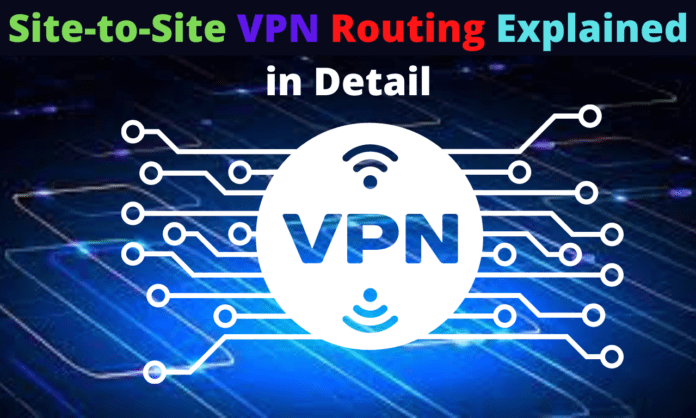
A site-to-site virtual private network connects two networks. It might be a corporate network with many offices or a branch office network with a central office and multiple branches.
Site-to-site VPNs are ideal for enterprises that emphasize private, secured traffic and have many offices distributed over wide geographic areas. These firms often need to access resources on a major network, such as email or data servers.
In certain cases, a server is the operational center of a critical business program. As though the application was physically located inside their building, a site-to-site VPN may provide all locations with complete access.
In many respects, the development of site-to-site VPNs parallels the history of the internet. Site-to-site VPNs were an early form of the internet. They were made feasible by the Advanced Research Projects Agency Network (ARPANET) and the early applications of Transmission Control Protocol/Internet Protocol (TCP/IP).
TCP/IP describes how data is structured into packets, assigned addresses, and sent and received over the internet. Before the internet, as we know it, computers were linked through private networks and TCP/IP. Site-to-site networks before the internet, laying the groundwork for today’s internet.
People wanted to disguise their IP addresses and browse the internet more securely, therefore VPNs grew in popularity. A masked IP address allows you to download torrents anonymously. You may also access geo-blocked material from anywhere.
A public network is also subject to continual cyberattacks, while a VPN provides a more secure, encrypted connection. VPNs for routers are getting popular among users due to their security, speed, geo-blocked content access, easy-to-use, and encrypted features.
However, one- or two-user VPNs cannot meet the demands of a big enterprise. The typical VPN used by torrentors or web surfers cannot manage the workload required by large corporations.
Understanding VPN and Its Types
There are many VPN varieties, each with its own advantages. Depending on your organization’s demands, one type may be more suitable.
Remote Access VPNs
It is a transitory link between two or more users and a central site. A remote-access VPN is usually used to connect each site to a data center. In certain cases, an IPsec-secured connection is sufficient. However, it is also popular for businesses to use a VPN, taking advantage of the protection provided by the VPN’s gateways.
Companies with remote employees on the road or at home might benefit from a remote access VPN. They may utilize a remote access VPN to access private or sensitive data stored on the company’s servers. To execute their tasks effectively, employees may now easily access materials.
This VPN type may be used to give remote employees the same experience as those in the main office who connect to the server via Ethernet cable. For each employee’s desktop, laptop, or mobile device, the remote access VPN stretches a cable over several miles—and even international boundaries.
Intranet-based Site-to-Site
An intranet-based site-to-site VPN joins many LANs to establish a WAN (WAN). This arrangement may also be used for software-defined WAN (SD-WAN). Intranet-based site-to-site VPNs are handy solutions for securely connecting resources located in different offices.
It is especially useful if each location develops its own resources or houses unique procedures that the whole organization needs access to. An intranet-based site-to-site VPN would provide decision-makers in several offices safe access to everything created, independent of their physical location.
Extranet-based Site-to-Site
They are typically utilized by two or more firms who wish to exchange resources yet keep others private. A company connects to a VPN using an extranet and decides what to share with other firms. They may interact and communicate without revealing confidential details.
How to Create a Site-to-Site VPN
In order to create a site-to-site VPN, you must first decide how data will be transported between sites and how it will be protected from hackers. This may be done using an internet-based or MPLS-based site-to-site VPN.
Creating an Internet-based Site-to-Site VPN
An internet-based site-to-site VPN combines an organization’s current network with the public internet. A VPN gateway encrypts the data sent and received over the internet.
To construct an internet-based site-to-site VPN, you need three components:
- A single base network
- A satellite network somewhere
- Securing a tunnel with security gates
Burrowing through or on top of an internet connection is possible. The tunnel prevents the traffic from being accessible by the physical network. Set up a gateway at each location. The first gateway in the tunnel will encrypt the data. Encryption protects data from individuals, devices, and software attempting to damage, steal, or compromise it.
The data meets the other gateway as it comes. This decrypts the data for the other network. Entities on the physical internet cannot read the data while it is encrypted. The data will be unintelligible without a second gateway to decode it.
To use the VPN, the user must first input credentials into a network access server (NAS).
You may also utilize a firewall, which acts as a formidable barrier between your private network and the internet. Firewalls may control the traffic that passes through them.












